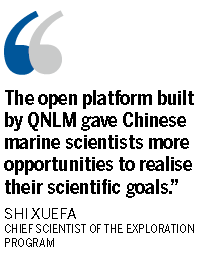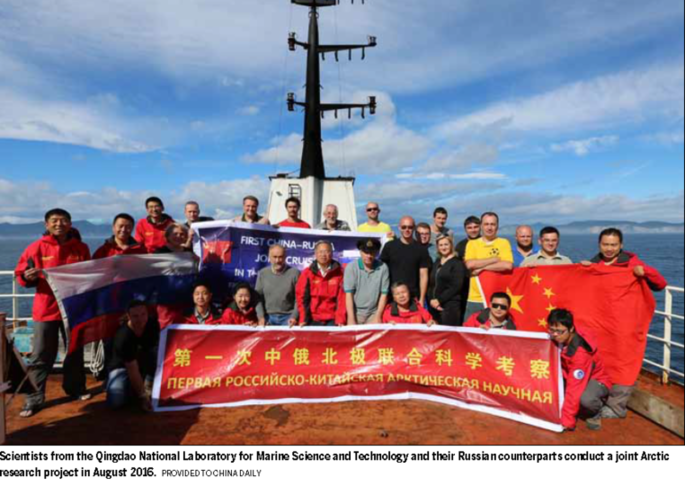Qingdao marine lab at cutting edge of discovery
By Yuan Shenggao ( China Daily )
Updated: 2017-11-29
|
|||||||||
Institution optimises allocation of global resources via collaborative innovation to meet country's strategic demands, Yuan Shenggao reports
Arising high-end lab in Qingdao, East China's Shandong province, is gaining worldwide recognition as it has become a dynamic force in global marine science research and innovation.
Launched in October 2015, the Qingdao National Laboratory for Marine Science and Technology, or QNLM, was founded by several governmental organisations. It is a key institution that optimises the allocation of global science and technology resources through collaborative innovation, in response to major national strategic demands.
One of QNLM's major missions is to build itself into an open innovative platform integrating China's once-separated marine research operations.
The platform has included China's first deep-sea manned submersible Jiaolong and several elite research vessels, such as Kexue and Xiangyanghong 01.
From April to May this year, QNLM carried out its first manned deep-sea exploration in the South China Sea, by joining together four diving missions performed by Jiaolong to conduct studies of deep sea geology, biology and environments.
Nine scientists from QNLM participated in the exploration and achieved fruitful results, most of which were at the frontline of scientific research.

Shi Xuefa, chief scientist of the exploration programme, said it is a scientist's dream to carry out his or her own plan, but it used to be difficult for most Chinese marine scientists to do so.
"The open platform built by QNLM gave Chinese marine scientists more opportunities to realize their scientific goals," Mr. Shi said.
It was the first time that Chinese scientists have worked together to combine and finalise their different missions, and complete them all during one expedition.
"The action plans were collected from among a wide range of scientists, and the samples gained from the missions were shared accordingly for scientific use," said Wu Lixin, director of QNLM's executive committee and an academician at the Chinese Academy of Sciences.
Mr. Wu said that QNLM collects scientific research resources and shares them with scientists, which makes it easier to gather innovative ideas and make scientific breakthroughs.
"QNLM is like a big theatre in which a scientist can put on a one-man show or join a group performance," Mr. Wu added.
Currently, QNLM has more than 1,200 researchers based in 13 subsidiary labs and a number of research institutions. They mainly focus on research into marine and climate change, the evolution and protection of marine environments, and the sustainable use of marine biological resources.
Last December, QNLM unveiled its high-performance computing centre. Its computing capacity reached 2.6 petaflops (quadrillion oating-point calculations per second), the fastest in the current international marine research area.
With the help of intellectual supercomputing and big data, QNLM is also carrying out major scientific projects, including "transparent ocean", "deep sea and polar regions" and "blue life", to support accurate predictions for the marine environment and climate change.
After nearly three years of operations, the QNLM has made many scientific breakthroughs. One of its greatest achievements was to establish a deep-sea observation network extending from the South China Sea to the Mariana Trench in the western Pacific, the biggest and widest of its kind in the world.





